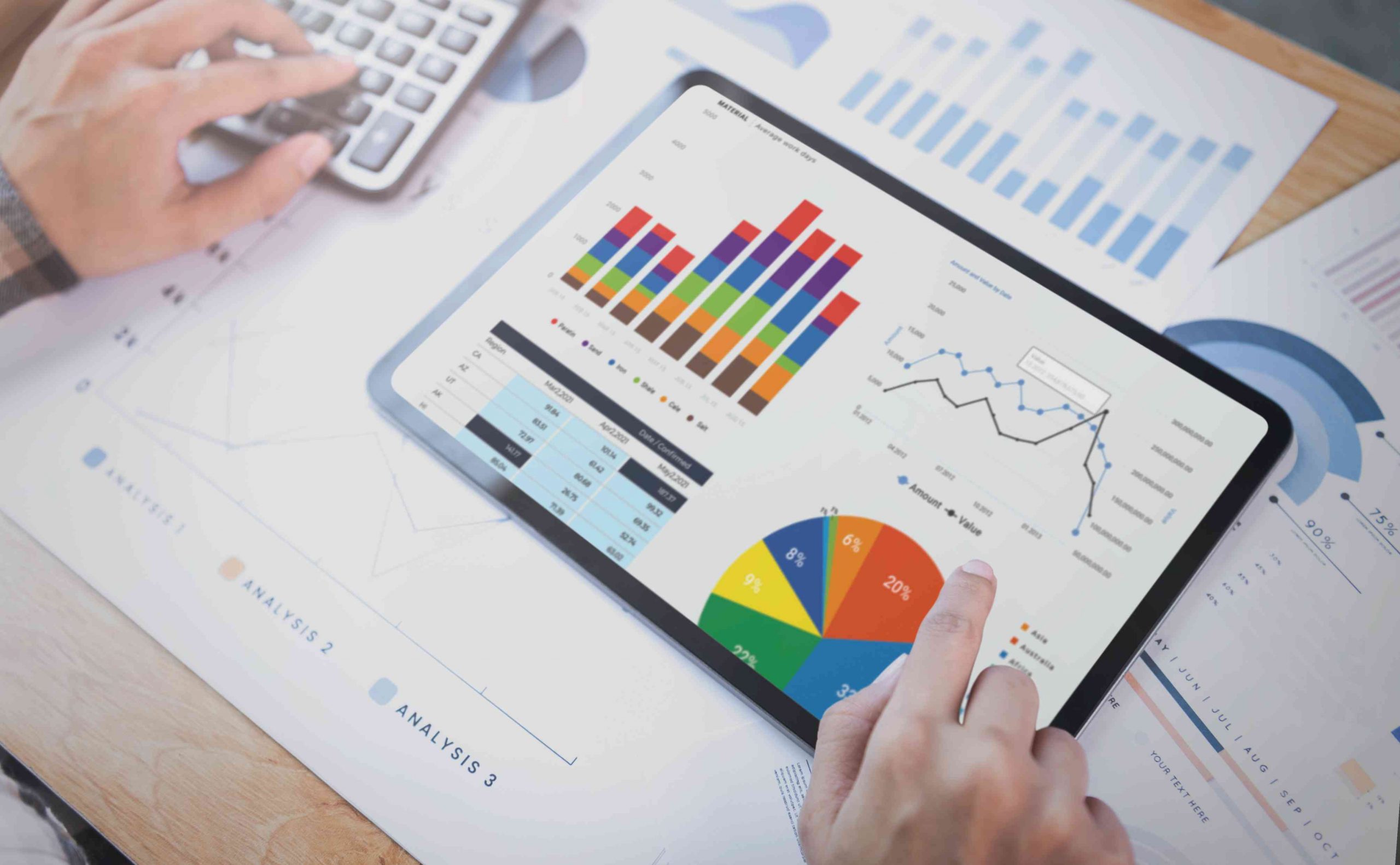Subscribe
Subscribe to EduBridge Blogs
What is Data Analytics and is the meaning
Have you filled in a testimonial at a restaurant at the end of a meal? If yes, have you ever wondered how is that data optimized? The collected data will be analyzed and later used to enhance your dining experience. The raw data is analyzed by Data Analysts using computing tools to come up with actionable insights that can enable smart business decisions.
The Evolution of Data Analytics a Short History
It is interesting to learn that human civilization relied on data ever since the Ancient and Medieval eras.
- The making of the Great Pyramid in Egypt is a result of acute Data Analytical procedures employed by the mathematicians and architects of that time.
- The same goes for understanding the reasons behind the Bubonic Plague by John Grant in the 1600s.
- About four decades ago, we collected data offline. Researchers have collected evidence of analysts collecting and analyzing data from Relational Database Management (RDBMS). These inferences were adopted by Howard Dresser in 1989.
- In the mid-2000s the term BIG DATA was trending, and various open-source networks came into being allowing analysts to use computing tools to structure large volumes of unstructured data.
Understanding the Basics of Data Analytics

Data Analytics stems from employing a set of qualitative and quantitative approaches in a synchronized manner to arrive at data sets that can prove to be fruitful for any business, understanding market trends, and can prove to be an effective enabler for making governmental decisions. In recent times Data Analytics has been viewed as one of the underlining reasons for catalyzing or fuelling the digital economy. To synthesize large volumes of data, we use some of the most.
Understanding The Different Types of Data Analytics
Since we know and understand the basics of Data Analytics, we will now delve into understanding the Different types of Data Analytics
- Descriptive Analytics – When the Data Analyst gives you a basic inference of the data, it helps understand the pattern. For instance, if you need to know the behavioral patterns of people using credit cards over the last ten years. This will involve a descriptive revelation of exploring the usage patterns in the past and in the present.
- Diagnostic Analytics – This involves getting into the what, where, why, and how. Diagnostic Data will help you mine and analyze information specific to a region. It will help answer questions such as – why is there a growing number of cancer patients in Japan?
- Predictive Analytics – As the name implies, analytics involves revelations of what will happen in the future. For example, an upcoming start-up might want to understand future market trends before launching a product/service.
- Prescriptive Analysis – The doctor gives you a prescription based on his diagnosis. Did you wonder what a Prescription is? A prescription is a written piece of advice given by the doctor based on what is experienced by the person. It is viewed as an effort to combat something grave and unforeseen in terms of health. In a nutshell, a prescriptive analysis is an advice-based analysis that could keep from making a bad business decision or stopping an unforeseen circumstance.
Why is Data Analytics important?
Since Data Analytics involves calculations and statistical insights drawn from organic inferences of people’s experiences, it is crucial for businesses. Some reasons for the growing importance of Data Analytics are enlisted below.
- Adopting an Effective Marketing Strategy – Data Analytics can help you fine-tune the marketing campaigns that can help you arrive at optimal marketing results.
- Enhanced Customer Services – As a business, you can plan bespoke services that cater to your customer’s requirements and needs. It can also help establish a long-standing relationship with your customer.
- Smarter Decision Making – Data Analytics helps you recognize your markets better, which gets you to save money and cut on unnecessary losses. It enables you to identify newer target audiences. With data analytics, you have eliminated the guesswork and have cut to the chase.
- Aligned operations – As a marketeer, Data analytics will give you a better understanding of what your end-users are looking at which will help you deliver campaigns that are purposed with greater insight that aligns with the thought process and the requirements of your customer.
What are the types of tools used in Data Analytics?
- Excel – Excel is a fantastic spreadsheet software enabling you to draw up calculations using specific mathematical formulations. It can also help create a graphical representation of statistics.
- Python – Python is an open-source programming language that is very flexible and most preferred by Data Analysts and Developers globally.
- R – Another open-source programming language like Python, with a slightly more complex syntax. R integrates well with the Big Data Software.
- Jupyter Notebook – It is a web application that enables you to create inactive documents. It is an open-source application; empowers the user to combine narrative text, equations, statistics, and more.
- Apache Spark – This is a Data Processing framework that is employed to analyze unstructured Data. Apache Spark is a fast and easy-to-use framework possessing a rigid user interface.
- SAS – A statistical software suite used by Business Intelligence analysts for predictive analysis. The software is easily accessible and provides excellent user support but, is relatively expensive.
- Microsoft Power IB – Another statistical software suite that can be compared to SAS, and is employed for creating Data Visualisation and Predictive Analytics. The perks are that the software has regular updates and connectivity but comes with rigid formulations.
- Tableau – Tableau is a well-known data visualization tool. It is ideal for creating worksheets and dashboards but has no data pre-processing.
- KNIME – It is a Data integration platform that is open source and visually driving. KNIME is used for Data Mining and Machine Learning. The program lacks the scalability and technical expertise for certain functions.
What types of Techniques are used in Data Analytics
Before we start with understanding the types of techniques used in Data Analytics, we need to understand what is
- Quantitative Data – it is structured data arrayed in rows and columns. Quantitative Data is the type of data that is measured.
- Qualitative Data – Qualitative Data is instructed data that needs to be mined out of inferences made by the opposite person. Qualitative Data is difficult to measure as it relies on an individual’s emotions.
The Different Data Analysis techniques include
- Regression Analysis – An analysis variation that strikes the chords between one dependent variable and a number of independent variables. Regression Analysis calculates and takes into consideration predictive measures.
- Monte Carlo Simulation – this is a method for generating probability distribution. Most of us use this method on routine basis, especially when trying to understand the fastest route to get to a destination. It is an ideal forecasting method used to arrive at a predictive analysis.
- Factor Analysis – This typically means large numbers are factored to a smaller number. The beauty of this technique lies in unveiling a pattern in large numbers. For example, bringing about a strong correlation between monthly household income and how much one would spends on entertainment per month. This is indeed a strong correlation.
- Cohort Analysis – Instead of looking at the large volume of data, one can understand the behavioral pattern of a group by dividing them into sub-sects or cohorts. For instance, if you are taking a college survey, you can break it up into cohorts and understand the behavioral pattern of those born in a particular year. Cohorts can be analyzed over a period of time. The behaviourial pattern of cohorts are influenced by their environment and the peers that they interact. It is a dynamic analysis and is best employed to study customer lifecycles.
- Cluster Analytics – It is a method that is adopted to identify the pattern within the data set. This analytical technique is applied to understand the impact of a campaign on a particular target group.
- Time Series Analysis – This analytical technique is used to understand what is #trending over a period of time. Again, this is a predictive analysis and is often used to understand trends in the stock market, market economies, and sales of products/services.

What are the skills required for Data Analytics?
It requires a synthesis of domain skills and soft skills to excel in the field of Data Analytics. Some of these skills include.
- Understanding important programming languages such as SQL, Python and R
- It is important to understand Machine Learning. It helps identify data patterns. Machine Learning is premised on the basis of AI (Artificial Intelligence)
- Data Analytics is not only about identifying data but also about understanding how to collect, organise and store data.
- Form a strong base with statistical insights and maths in order to come up with precision predictive analytics.
- Excellent communication skills to be able to explain your predictive insights and market trends to businesses and convince them to make smart business decisions, to steer businesses more profitably.
What is the Future of Data Analytics in India – 2023?
According to India Brand Equity Foundation Reports (IBEF), we learn that Data Analytics will play a critical role in the fourth phase of industrialization in India. Studies reveal that over 11 million placement opportunities will be created across industries by 2026. This means that 33.49% increment in the investments made in AI and Machine Learning by the end of 2024. According to LinkedIn reports, Data Analytics is not only the fastest-growing profession in India but also one of the fastest-growing professions in the world.
How to learn Data Analytics?
Enrol for EduBridge’s IBM Advanced Certification Program in Data Analytics that comes with a 110% Money Back or a Placement Guarantee. Learn with the choicest of Master Trainers, and seek the opportunity to meet and interact with industry experts. Our Dedicated Placement Manager services will guide you through a string of placement opportunities with renowned Multinationals that will accelerate your growth path in the field of Data Analytics.
How much can you earn after doing a Data Analytics Course in India?
The national average salary of a Data Analyst on a per-annum basis is ₹5,00,000/- per annum. The amount will vary and expected to go up basis the experience, field, and organization that these professionals are associated with. Interns who start applying for the position while they acquire their certification can earn up to ₹3,50,000/- per annum. Experienced analysts can earn up to ₹13,00,000/- or more. The Salary of a Data Analyst also depends on which sector they work.
Getting started with Data Analytics Programme
The national average salary of a Data Analyst on a per-annum basis is ₹5,00,000/- per annum. The amount will vary and expected to go up basis the experience, field, and organization that these professionals are associated with. Interns who start applying for the position while they acquire their certification can earn up to ₹3,50,000/- per annum. Experienced analysts can earn up to ₹13,00,000/- or more. The Salary of a Data Analyst also depends on which sector they work.
If you are interested in learning Data Analytics, you can log on to www.edubridgeindia.com, and register for the Advanced Certification Program in Data Analytics.”
Recent Blogs
Accelerate Your Career with Expert Guidance and Guaranteed Job*!
"*" indicates required fields








